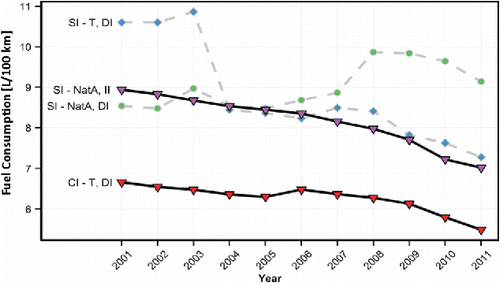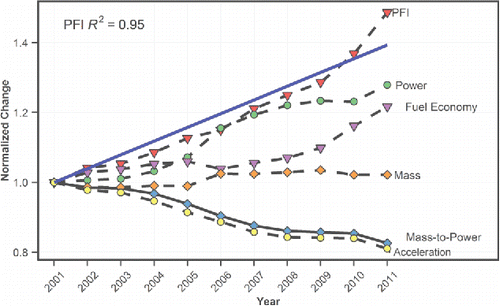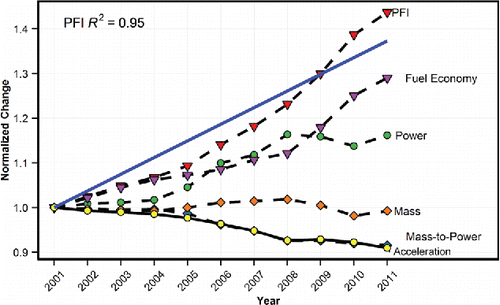Figures & data
Figure 1. Annual mean fuel consumption (l/100 km) for vehicles by fuel type, as presented in the raw vehicle data. Disjoint correlations for EV and SI (E85) vehicles are attributed to sample bias (i.e. low availability). SI/LPG and SI/CNG refer to bi-fuel vehicles.

Figure 2. Relative availability of LDVs by air-delivery systems, fuel type, and year. CI-NatA vehicles are represented in the “Other” category and NotAv refers to SI vehicles whose fuel delivery system was not specified in the CAP data.
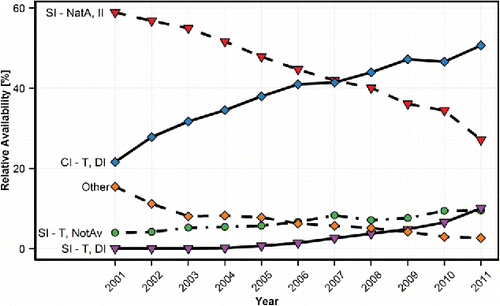
Table 1. Average characteristics of DI and II fuel delivery systems in 2001 and 2011, by fuel type.
Figure 4. Annual mean compression ratios for SI and CI engines, segregated by air (dashed lines) and fuel delivery (solid line) system.
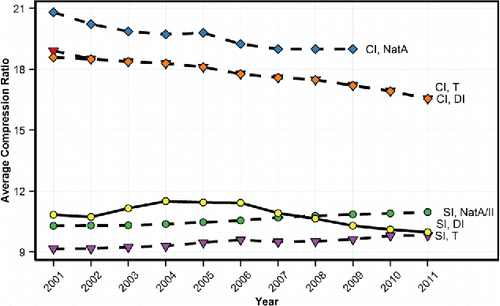
Figure 5. (a) Number of cylinders and (b) mean volume of SI and CI engines by the number of cylinders.

Figure 6. Annual mean power density for SI and CI engines segregated by air (dashed) and fuel (solid) system. Correlations between the trends for CI-T and CI-DI vehicles are attributed to the high availability of CI vehicles that incorporate both technologies.
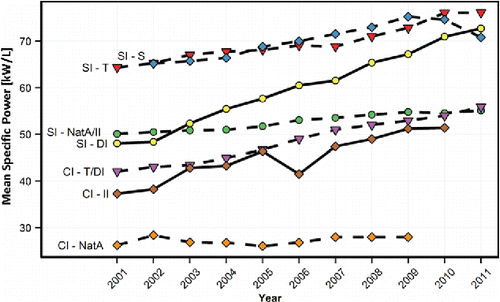
Table 2. BMEP at maximum torque by AFD system.

